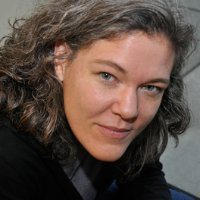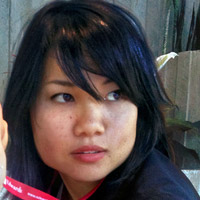Magic Origins: A New Era
Five Planeswalkers. Ten worlds. And the beginning of a new era of Magic storytelling.
- Gideon: From a troubled street kid to a powerful protector of the innocent. (Read his origin story)
- Jace: From a talented pariah to a brilliant and mysterious telepath. (Read his origin story)
- Liliana: From an aspiring healer to a devious necromancer who commands legions of zombies. (Read her origin story)
- Chandra: From a rebellious troublemaker to an accomplished pyromancer who challenges authority. (Read her origin story)
- Nissa: From a misunderstood outcast to a warrior dedicated to protecting life on all worlds. (Read her origin story)
In Magic Origins, we're focusing on these five characters: the seminal moments that transformed them into Planeswalkers, and the pivotal experiences that shaped them into who they are today.
This is a different approach to core sets than you've seen in the past. Ten planes are featured in the new cards of the set: the characters' home planes and where they go on their first planeswalk. The storyline explores the Planeswalkers' history and motivations. Each of these characters experienced an emotional awakening powerful enough to ignite their spark and change their lives forever. From a story perspective, these emotional awakenings are the heart of Magic Origins.
| Planeswalker | Home Plane | First-Planeswalk Plane | |
|---|---|---|---|
Gideon | Theros | Bant | |
Jace | Vryn | Ravnica | |
Liliana | Dominaria | Innistrad | |
Chandra | Kaladesh | Regatha | |
Nissa | Zendikar | Lorwyn |
Since these five Planeswalkers are going to be crucial to storyline in the near future, we wanted to explore their origins before beginning the next phase of the Magic story. You'll see their stories in multiple venues: cards, Magic Duels: Origins, Uncharted Realms, and more. And you won't have to jump from venue to venue to follow the story. We're adopting a new storytelling model, so wherever you prefer to engage with Magic, you'll experience a story in alignment with what's current in the card set.
Over the next five weeks, you'll be able to read all five origin stories in this column.
| Date | Planeswalker | Story Title | Author | |
|---|---|---|---|---|
June 10 | Chandra Nalaar | Doug Beyer | ||
June 17 | Liliana Vess | James Wyatt | ||
June 24 | Jace Beleren | Kelly Digges | ||
July 1 | Gideon Jura | Ari Levitch | ||
July 8 | Nissa Revane | Kimberly J. Kreines & Adam Lee |
So, that's a big change for Magic storytelling, right?
Yes, it is. And we're incredibly excited about it. There are two things I can say about everyone on the Magic story team: we love Magic and we want to tell stories about the amazing characters and planes of the Multiverse. You'll hear more about the team in a moment, but it was our desire to "get the story out there" that made us re-evaluate the way we do things. After much deliberation, we arrived at a new model for storytelling. Magic Origins marks the beginning of this transformation, and you'll see it develop in Battle for Zendikar and beyond.
This new storytelling model has three pillars:
1. Story Should Be Accessible
Increasingly, you're going to see story moments featured on cards (á la Deicide and Crux of Fate). We're working with the design team to infuse story into the DNA of some cards, and this collaboration continues through development and into the concepting stage. But it's challenging to depict a linear narrative in randomized still images so we have found other venues to delve more deeply into story, specifically Uncharted Realms. Tarkir block marks the first time we released sequential, plot-relevant stories on the web site. The response has been fantastic, and we plan to continue to deliver the storyline in a weekly column.
2. Story Should Be Aligned
Our storytelling approach is about alignment across many venues. No matter where someone first experiences the Magic story, we want them to understand what's happening in the current storyline. Each venue needs to be able to do what it does best, while staying true to the Magic story. And, ideally, each venue should offer something slightly unique. For example, Uncharted Realms is the place to go for the narrative details, while Magic Duels: Origins allows you to experience the stories through game play and story-focused illustrations. And you'll see new story venues in the months to come as we expand our trans-media storytelling efforts.
3. Story Should Be Relevant
Years ago, I read Alan Moore's Writing for Comics, and he had a section on the meaning of stories. He drew a distinction between what happens in the story and what the story is about. Of course the characters are doing something in the story, but those actions should add up to something larger, some relatable connection to the human experience. Moore's book was a major turning point in how I approached writing, and it transformed how I think about the fantasy genre. A character might ride dragons or shoot fireballs out of her fingertips but, despite the fantastical context, the emotions she experiences should be relatable to a modern audience.
In short, we want to tell stories that matter. Magic is for everyone, and we want the storyline to have something to offer everyone as well. While we don't expect you to identify with every story, we hope you find characters that you can relate to and experiences that resonate with your own.
The Magic Story Team
In addition to the changes to how we tell story, there are also some new faces on the team. I'd like to introduce the writers who work on Magic story.

Doug Beyer — Doug is the senior writer on the creative team—a seasoned veteran, and a dedicated steward of Magic creative. You should check out his Tumblr, where he talks about things related to Magic story. Doug has worked on Magic creative since 2006 and been a part of worldbuilding for every set since that time. He was the design lead for Magic 2013 and has served as creative liaison on numerous design and development teams including Innistrad, Return to Ravnica, and Theros. He's creative lead for the block that begins in late 2016 (just wait, it's going to be amazing).

Kelly Digges — Kelly Digges has worked at Wizards since 2006, and he has an incredible knowledge of Magic lore. He's been an event text-coverage editor, card editor, copyeditor for DailyMTG.com, copyeditor and managing editor for DailyMTG.com, card editor again, and now creative designer. He's also served on design and development teams for a number of sets. He joined the story team last year after moonlighting on Uncharted Realms, and we've been thrilled to add someone with his experience to the team.

Jenna Helland — I've been working on Magic for seven years. Some of my favorite projects have been concepting Innistrad, worldbuilding for Return to Ravnica, and writing Elspeth's story. Last year, I became manager of the story team. It gives me less time for writing, but it's a privilege to helm this amazing crew.

Kimberly Kreines — Kimberly Kreines started at Wizards in June of 2014. Before she joined the team, she was a screenwriting professor, freelance author, and a neuroscientist. She says her favorite thing about working at Wizards is that she spends her time thinking about storytelling with a team who are just as passionate about writing as she is. A talented and relentless writer, she has demonstrated a knack for getting inside our character's heads and bringing them to life.

Ari Levitch — Ari has been with the team since 2013. Before Ari joined Wizards, he was a history teacher with a passion for writing, comics, and storytelling. Since he joined the team, he's brought that same passion to his worldbuilding, creative-text coordination, and concepting. Most importantly for this article, Ari was the creative lead for Magic Origins. This was his first time as creative lead. He says he was particularly excited about this project because he's always been intrigued by how a character's origin story establishes their motivation, and ultimately defines who they are.

Mel Li — Mel joined the Story Team in April. Previously, she was a postdoc in bioengineering and has been an avid Magic player since Revised Edition. She's says she's excited to be able to work with such a talented team on her favorite game.

James Wyatt — James Wyatt started at Wizards in January of 2000. He worked on Dungeons & Dragons until June of last year. He's the author of five D&D novels, including the Draconic Prophecies trilogy set on the world of Eberron and award-winning D&D game products, including the Eberron Campaign Setting. For the latest edition, he was the lead writer for the Player's Handbook and a primary designer for the Dungeon Master's Guide. He's a master text wrangler, a veteran worldbuilder, and a Commander aficionado.

